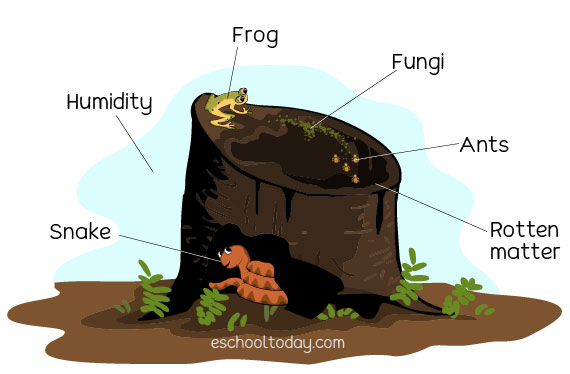- Ecosystems
Scales of Ecosystems
Ecosystems come in indefinite sizes. It can exist in a small area such as underneath a rock, a decaying tree trunk, or a pond in your village, or it can exist in large forms such as an entire rainforest. Technically, the Earth can be called a huge ecosystem.

The illustration above shows an example of a small (decaying tree trunk). CLICK HERE to see how the tree trunk ecosystem works
To make things simple, let us classify ecosystems into three main scales.
Micro:
It is a small-scale ecosystem such as a pond, puddle, tree trunk, under a rock, etc.
Messo:
It is a medium-scale ecosystem such as a forest or a large lake.
Biome:
It is a large ecosystem or collection of ecosystems with similar biotic and abiotic factors such as an entire rainforest with millions of animals and trees, with many different water bodies running through them.
Ecosystem boundaries are not marked (separated) by rigid lines. They are often separated by geographical barriers such as deserts, mountains, oceans, lakes, and rivers. As these borders are never rigid, ecosystems tend to blend into each other. That is why a lake can have many small ecosystems with their unique characteristics. Scientists call this blending “ecotone”
Ecosystems can be placed into two groups. If the ecosystem exists in a water body, like an ocean, freshwater, or puddle, it is called an aquatic ecosystem. Those that exist outside of water bodies are called terrestrial ecosystems.
